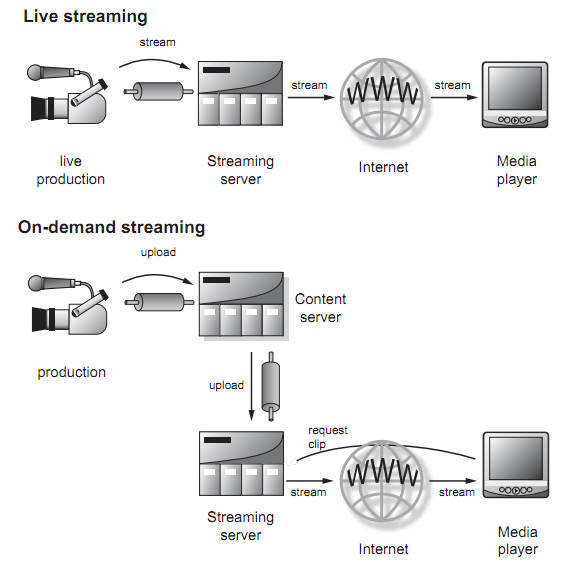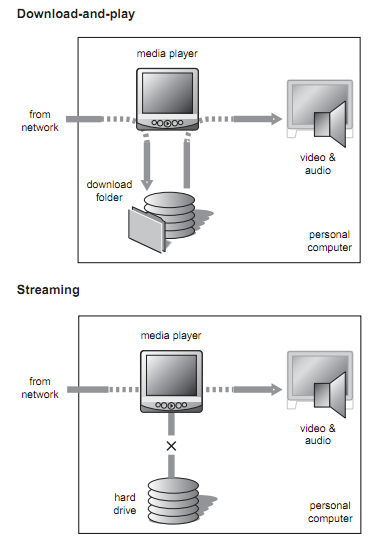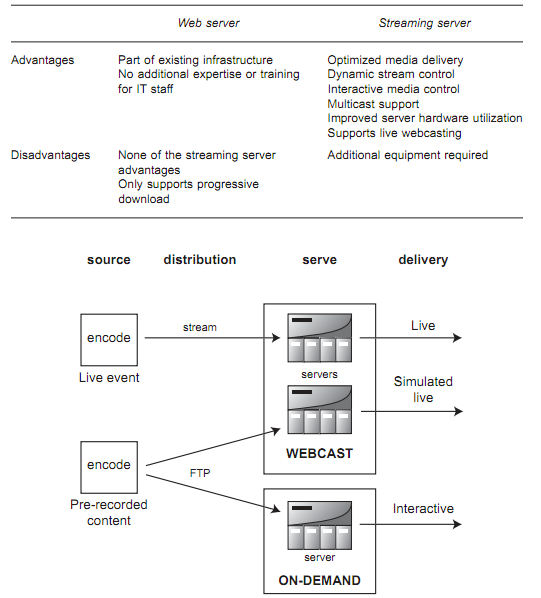
One of the primary reasons that producers use streaming servers is because once video is stored (or cached) on a hard drive, it's very easy to copy. Streaming video can be cache-less, which makes it inherently more secure.
Most Internet Video is delivered by progressive download. For example, YouTube video is delivered by progressive download.
What's happening when we watch a movie from a web site? First, the video file is placed on a server. Second, we click a link to that file on a web page. The server sends the data to us. It may appear to be streaming since playback can begin almost immediately. The progressive download feature in most media players allows them to begin playing the file as soon as enough data has been downloaded.
Years ago, the only acceptable way to deliver video was via streaming protocols such as RTSP, RTP, or RTCP that required proprietary players and expensive servers. Often referred to as Streaming Video, these solutions were costly and did not scale well but offered more functionality at the time. Yet, as technology has evolved, there was a wholesale migration towards to a new way of delivering video delivery via the standard HTTP protocol (often referred to as Progressive Download). Less expensive, it also scales well. This shift has occurred due to customer acceptance once the technology evolved to include many of the features that were once only possible with streaming protocols.
By using metadata attached to encoded files, progressive download can now allow users full seek and navigation at any time without requiring full file download. By using bandwidth throttling (specify bit rate that files should be delivered at), it is now possible to deliver only the amount of video that will be viewed, preventing wasted bandwidth.
To maximize security, no-cache headers can be used to prevent browsers from storing content in cache and further DRM protection is easily available from partners.
So, with the broader availability of high-bandwidth networks and new media delivery features of web server, the differences that previously favored the use of a stream server over a web server for delivering digital media content have blurred. In non-multicast streaming scenarios, depending upon your business need, a stream server or a web server can both be viable options for digital media content delivery today.
However, in many ways it is inferior to adaptive streaming - Http Live Streaming (HLS) which will be described later.

Progressive download can be achieved using a regular web (http) server. The client (player) handles the buffering and playing during the download process.
The quality of the file from the progressive download is pre-determined. A user watching from a mobile connection on a 3 inch screen will have the same video as a user watching from a cable modem connection on a 1080p TV. The player is unable to dynamically adjust based on the user's network and screen conditions. Furthermore, if a user starts in a high-bandwidth environment, then moves to a low-bandwidth environment, HTTP Progressive Download is completely unable to keep pace. HLS, however, handles this scenario gracefully with minimal rebuffering and lag.

Thanks for Sharing this article. I will use this information our Live Streaming App.
ReplyDelete